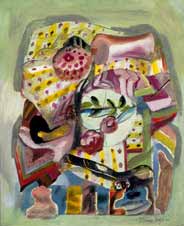

![]()
Art History, NZ, page 6
Rising to the surface during the 1920's was the dissatisfaction many artists felt with the running of the art societies. In 1924 the National Art Association of NZ was founded on the basis that artist members controlled it's organisation. The issue of control set a pattern for other breakaway groups over the next 25 years.
The most important were The Group, Christchurch, the NZ Society of Artists, and the Rutland Group, Auckland.
Other important factors relating to art were the publication of "Art in New Zealand" (1928-46), the opening of the Robert McDougall Art Gallery in 1932 and the National Art Gallery in 1936, and in 1940 the National Centennial Exhibition of New Zealand Art.
Modest contacts with Modernism came with work brought back from England by Edith Collier in the early 1920's, in work sent back from Europe by Rhona Haszard (below), with the return in 1929 of John Weeks, and his polite Cubist works, with the arrival of Perkins and the exhibiting of Field's paintings such as "Christ at the Well of Samaria".
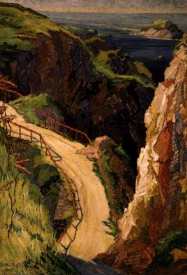
Then in the early 1930's Flora Scales returned from Europe and exhibited work that showed ideas acquired while studying at Hans Hofmann's school in Munich.
Local artists were also trying out new approaches. In the late 1920's and early 1930's Olivia Spencer Bower, Russell Clark, and Lois White (below) produced paintings that possessed a stylish jazzy element.
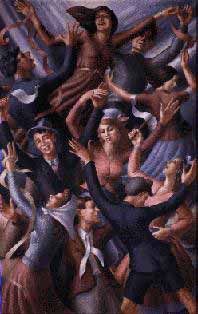
TA McCormack was slowly evolving his calligraphic style and MT Woollaston (image below), spurred on by his brief contact with Flora Scales, painted his angular, almost primitive-like landscapes and figures. His early awareness of Cezanne and the German Inpressionists is evident.
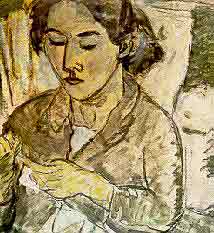
During this period some of the younger Canterbury School painters made good use of the 1920's poster-style with it's simplified imagery, form and colour, giving to it a regional quality that can be seen in AF Nicoll's landscapes, but became stronger in the work of Colin and Rata Lovell-Smith and Olivia Spencer Bower.
This approach continued through the 1930's and though modified was important in the early work of WA Sutton, culminating in his series of Canterbury Church paintings of the 1950's. This simplified style was also a springboard for Rita Angus's approach, though modified by her "medievalism"

The interest in specifically NZ landscape during the 1930's and 1940's also asserted itself in the paintings of Perkins, Jenny Campbell, Ida Eise, John Weeks (known for his rich and individual sense of colour, image below), John & Charles Tole, Myra Kirkpatrick, MT Woollaston, Juliet Peter, Doris Lusk, Elise Mourant and, in a more symbolic way, in the early landscapes of Colin McCahon.
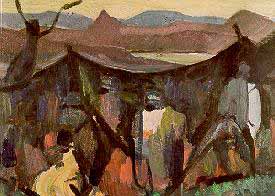
In contrast to the South, painting in Auckland was more sombre and affected either by Archie Fisher's heaviness of form or the romantic undertone of John Weeks's liberalism.
Ideas appealed to Bessie Christie and Lois White, while in the late 1940's and 1950's an expressive romaticism came to the fore in the landscapes of Eric Lee-Johnson and John Holmwood and, in contrast, the brighter coast-scapes by Helen Brown (image below).
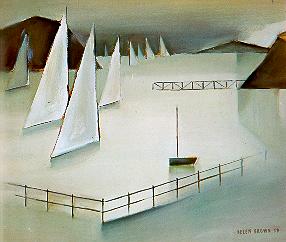
This
Web Directory will always be dynamic ~
all details are flexible and changing